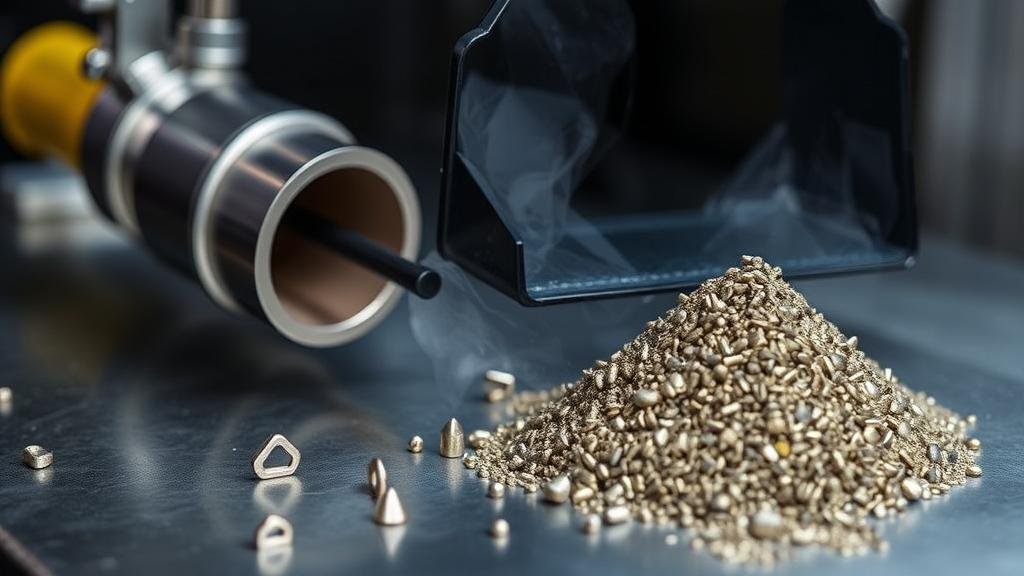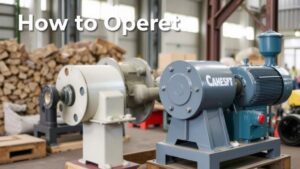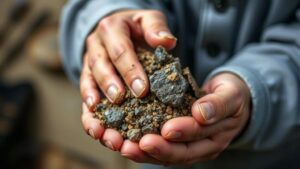Recovering Metal Alloys From Polymetallic Ore Concentrates
Recovering Metal Alloys From Polymetallic Ore Concentrates
The recovery of metal alloys from polymetallic ore concentrates is essential for the production of a variety of materials that are integral to modern industries. The process involves the extraction of valuable metals such as copper, nickel, cobalt, lead, and zinc, among others. This article provides a detailed overview of the methodologies employed in the recovery process, challenges faced, and the significance of these processes in sustainable resource management.
Understanding Polymetallic Ores
Polymetallic ores are those that contain two or more economically significant metals. e ores are often complex and heterogeneous, comprising a variety of minerals and metal compositions. Typical examples include:
- Cu-Ni ores, which contain both copper and nickel.
- Pb-Zn ores, known for their lead and zinc content.
- Co-Ni-Cu ores, which are rich in cobalt, nickel, and copper.
The recovery of metal alloys from such ores is crucial due to the growing demand for these metals in sectors like electronics, automotive, and renewable energy.
Recovery Methods
There are several methods adopted for the recovery of metals from polymetallic ore concentrates. The choice of method often depends on the type of ore, the desired metal content, and environmental considerations. most common methods include:
- Pyrometallurgical Processes: Involves the application of high temperatures to extract metals. It is often used for ores with high metal concentrations. For example, smelting is a widespread method where concentrates are heated to high temperatures, allowing the metals to separate from impurities.
- Hydrometallurgical Processes: Uses aqueous solutions to extract metals. This method is more environmentally friendly and is typically used when dealing with lower-grade ores. For example, leaching can selectively dissolve metals from the ore, followed by precipitation to recover the desired alloys.
- Bioleaching: This innovative method employs microorganisms to extract metals from ores. For example, certain bacteria can oxidize metals, facilitating their recovery. Bioleaching is gaining traction due to its lower environmental footprint compared to traditional methods.
Case Studies in Metal Recovery
One illustrative example of successful metal recovery is the processing of copper-nickel sulfide ores in Sudbury, Canada. The local industry employs both pyrometallurgical and hydrometallurgical methods to enhance the metal yield and minimize waste. The Sudbury operations have successfully adapted techniques like the use of flotation to concentrate the metals before smelting.
Another case is the adoption of bioleaching in the recovery of copper from ore in Chile. Research demonstrated that specific bacteria increased copper recovery rates by up to 20% compared to traditional leaching methods, significantly benefiting the local mining economy.
Challenges in Metal Recovery
While advancements in technology have improved recovery methods, several challenges remain. Key issues include:
- Environmental Concerns: The processes involved can pose environmental risks, such as soil and water contamination from tailings. Regulatory frameworks must adapt to ensure safe practices.
- Economic Viability: High capital and operational costs can limit the feasibility of certain recovery methods, particularly for lower-grade ores.
- Complex Ore Structures: The inherent complexity of polymetallic ores can lead to inefficient recovery rates, making it critical to develop tailored solutions for specific ore compositions.
Conclusion and Future Directions
The recovery of metal alloys from polymetallic ore concentrates is a vital component of resource management and industrial production. As the demand for metals continues to rise, innovative methods and technologies will play an essential role in enhancing recovery efficiencies while minimizing environmental impacts.
To further improve outcomes, ongoing research is necessary to develop:
- Novel recovery techniques that integrate sustainability.
- Automation and real-time analytics to optimize recovery operations.
- Policies that encourage investment in advanced recovery technologies.
To wrap up, embracing a holistic approach to the recovery of metal alloys will not only drive economic benefits but also contribute to sustainable practices in metal resource management.



